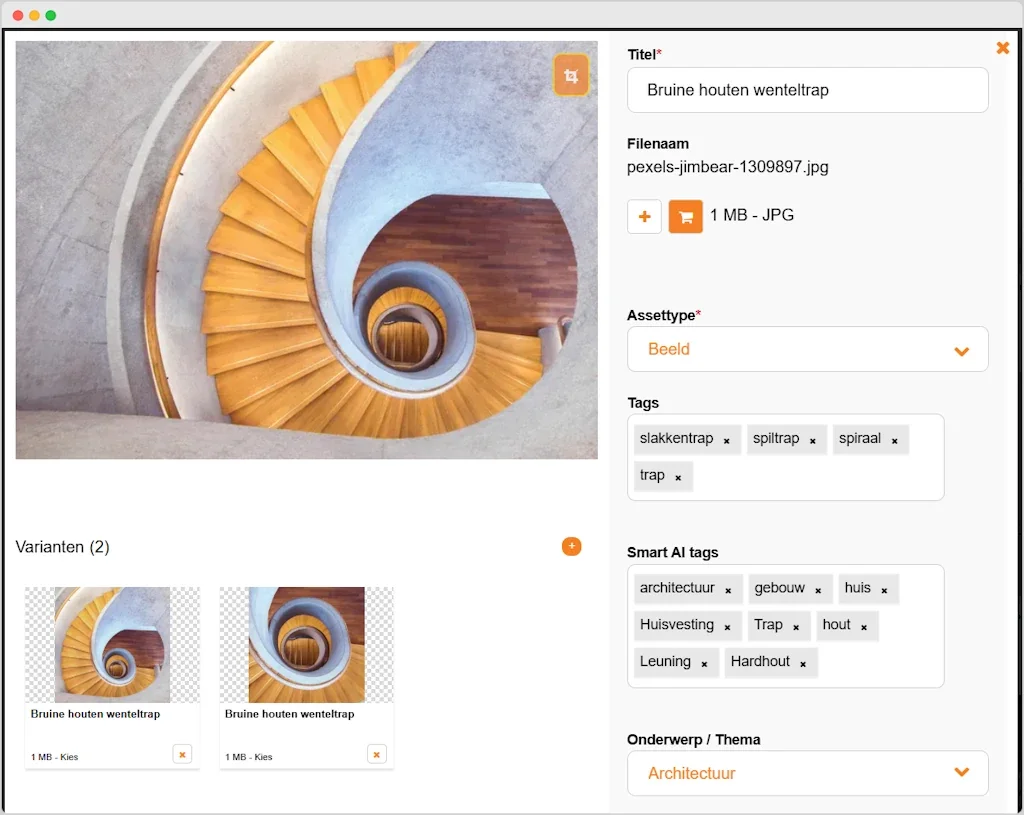Working smarter with metadata in your DAM system
A Digital Asset Management (DAM) system is all about overview, findability and control. Metadata plays a key role in this. But how do you make sure your metadata helps rather than hinders you? And how do you make managing it scalable, especially when working with large volumes of images, video and other files? For organizations without DAM, metadata is often an overlooked component. But there are also gains to be made for existing users, especially with smart automation and AI.
Why metadata is the foundation of good DAM use
A DAM system without good metadata is like a library without an index. You may have thousands of assets stored, but if no one can find them quickly or knows what's for what, you'll still incur delays and errors. Consider:
Teams working with outdated or incorrect images;
Unnecessary waste of time searching for that one logo or campaign video;
No grip on usage rights, versions or context.
Good metadata makes assets findable, usable and reusable. Not only internally, but also towards agencies or other external partners.
For new users: start with smart structure
If you don't use DAM (yet), metadata often starts with file names like final_def_v5_NOW.jpg. Not an ideal situation. In a well-designed DAM system, metadata is not something you "add on," but an essential part of your workflow. Think of fields like:
Asset type (image, video, audio, template)
Campaign or project
Target market or marketing channel
Publication rights or license end date
By thinking carefully about your metadata structure in advance, you build a sustainable and scalable foundation.
For existing customers: work faster with AI auto-tagging
As a Comrads client, do you already have your DAM structure in place? Then you've already taken an important step. But there is always room to work smarter. Especially when it comes to metadata automation. This is why, within our DAM solution, we offer the option of using AI auto-tagging to have general metadata generated automatically. Think about:
Image content (such as "office," "team meeting," "product")
Colors, atmosphere or setting (such as "outdoors," "summer," "evening light")
Face recognition or object classification (for visual consistency)
This saves time on manual tagging and prevents forgetting important metadata. Moreover, it increases the usability of assets in the future - even if the team changes or grows.
Practical tip: metadata as a filtering tool
Metadata is not just something for behind the scenes. In a well-designed DAM system, metadata tags act as filters in your search functionality. For example, depending on your metadata structure, you can easily filter on:
All product images for socials in Q3.
Images with rights until December 2025.
Videos of brand campaigns aimed at B2B customers.
The more consistent your metadata, the more valuable your search results. And that translates directly into time savings and brand consistency.
Need help with your metadata model?
Whether you are at the start of a DAM project or have been a customer for years: good metadata management is not a one-time action, but a continuous process. Want advice on optimizing your metadata model or deploying AI tagging smartly within your organization? Feel free to contact us. We like to think along with you.
Want to know more about metadata or AI auto-tagging in DAM?
Schedule a free consultation or short demo with one of our DAM specialists. Or discover more about our AI auto-tagging.


